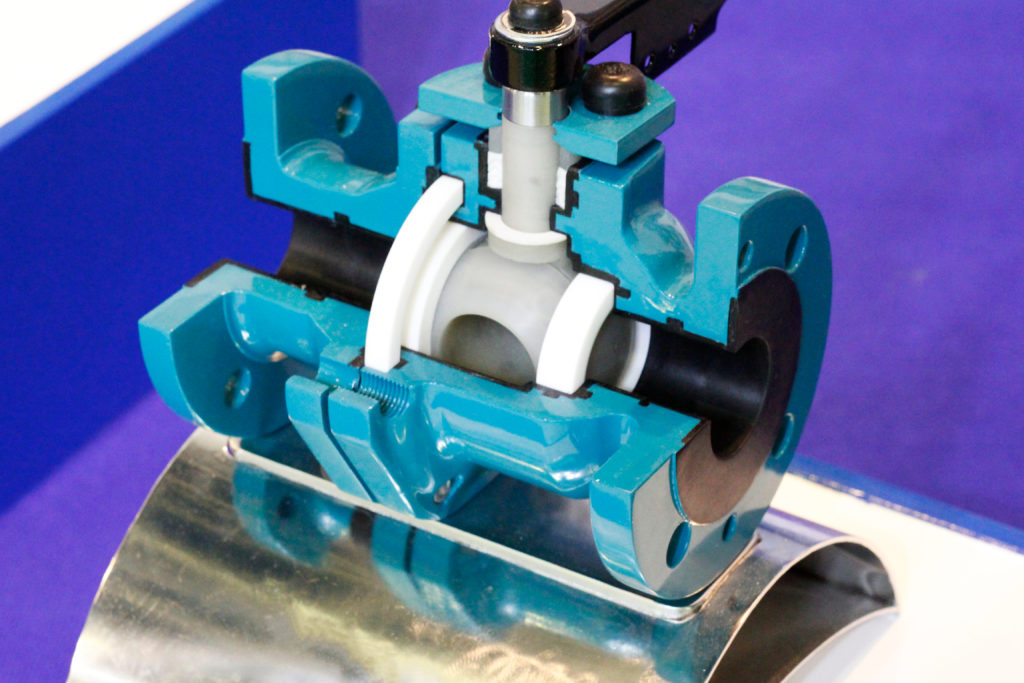Radial shaft seals are often found in aggressive environments with high temperatures and pressures. Unfortunately, these environments are also frequently dry-running and unsuitable for traditional radial shaft seals. So, what are the options if traditional radial shaft seals won’t work? Using PTFE lip seals as rotary shaft seals can offer better protection and longer life than conventional radial shaft seals. Understanding these lip seals are essential to helping you make the right choice for your sealing needs.
What Are PTFE Lip Seals
PTFE (polytetrafluoroethylene) lip seals have a lip on the interior diameter (ID) that allows it to fasten to an outer diameter (OD) of a metal casing or shaft. The seal is completed with a gasket sandwiched between the sealing lips.
Not all lip seals are spring-energized. Therefore, the force from radial contact is lower. The lower pressure allows the seal to function at higher surface speeds of up to 10,000 sfpm. This type of seal is for high rates, making it the go-to choice for sealing rotating shafts.
PTFE Lip Seal Fillers
PTFE Lip seals can be enhanced by using fillers instead of virgin PTFE. Fillers can help the seal withstand sintering temperatures. Some of the filled compounds include:
- Carbon-Graphite
- Carbon Fiber
- Aromatic Polyester
- Molybdenum Disulfide and Fiberglass
- Fiberglass
- Graphite
- Mineral
- Stainless Steel
Each filler offers higher temperature resistance and lower creep rates than virgin PTFE. In addition, some offer lower abrasion or better corrosive protection depending on the filler type. Which type of filler you want will rely on the application where you use the lip seals.
Applications That Use PTFE Lip Seals
PTFE lip seals are found in most applications where speed is concerned. However, they also are ideal for conditions where highly corrosive compounds or in dry, abrasive environments.
Aerospace
The aerospace industry needs seals that can cope with extreme temperatures, surface velocities, and high pressures. External gearbox seals are just one place where PTFE lip seals are used in the aerospace industry.
Lip seals can handle the extremes and offer advanced fuel consumption efficiency. Better efficiency of burning about half-gallon of fuel per mile can save airlines an operating cost of $1.7 million per year.
Other instances in which the aerospace industry uses lip seals include military applications such as:
- Lift fans for vertical lift
- Wing flap and slats actuator seals
- Rotorhead
- Equipment in arresting system to catch aircraft as it lands on aircraft carrier decks
Automotive
In the automotive industry, PTFE lip seals are employed in the drive shafts of the top-fuel blowers in NASCAR engines. Traditional crankshaft seals were burning out in these engines due to the high speeds and rapid pressure increases within five minutes at racing speeds.
They are also in e-drive and cooling systems in electric vehicles. Lip seals in electric cars can handle the shaft speeds seen in these automobiles. Electric vehicles can run at over 18,000 RPM, a higher rate than gas-powered cars.
Conclusion
PTFE lip seals are ideal for rotary shafts operating at high speeds and temperatures, such as in the automotive or aerospace industries. Choosing suitable fillers can also help extend the seal’s life. Contact us today, and we can help you determine which PTFE lip seal options you want.


